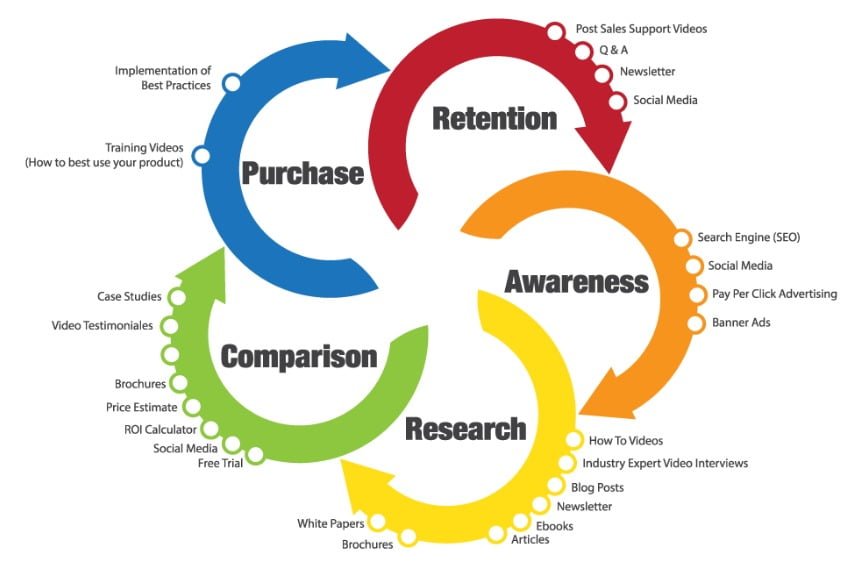Understanding targeted demographic:
Understanding your customer is important, and Providing them with a great user experience for your product is
even more journey stages. Which in turn maintains or even increases customer retention, thereby maximizing profits.
The customers love to stick with a business that offers them value and provides great experiences along the journey.
The more value you offer potential clients, the more likely they are to complete the customer journey.
● What are the key challenges marketers face?
But there are some key challenges that are faced by marketers. Customers are firmly incorporating
technology into their purchasing journey, undertaking buying journeys in increasingly complex ways and often
using multiple channels and devices to complete a single purchase. Whilst initially it may seem as though
customers using more channels means marketers have more opportunities to reach them, the reality is that
customers expect to be able to use their preferred methods or channel at each stage, and at any time,
adding to the complexity faced by marketers.
Another key challenge faced by marketers is customer expectations. Customers increasingly want their journey
to be truly personalized, built around their individual needs. That includes different purchasing options and ever
more convenient customer service. Consumers are increasingly likely to seek out reviews from friends, family
members and peers when making a purchasing decision so it is vitally important that the reputation of your
organization is positive amongst these groups. This has led to different advocacy platforms like TripAdvisor
evolving and their influence on customer behavior cannot be understated.
Authenticity is another area which is becoming increasingly important to customers. Authenticity doesn’t
mean that your organization’s products have to be all-natural or hand-crafted. It means that customers expect to be
engaged with marketers on a human level, the organizations they want that demonstrate understanding and
empathy towards them and genuinely care about helping to solve their problems. Customers are quick to
recognize organizations who treat this as a tick-box activity.
● What is the customer journey?
The customer journey is the collective interactions that consumers experience as they interact with a brand.
This is a common term used by marketing and leaders in order to develop strategies and roadmaps.
● What are the 5 customer journey stages?
1. Awareness:
There are Distinct phases from which Awareness is the most important. The potential customer should be guided
accordingly in order to be introduced to and buy into your products. It is a discovery stage for the
customer where the customer realizes that they have a need or a problem, so they start searching for solutions,
which accommodates common marketing practices such as online ads and educational offers. To reach the
customers in the awareness stage some tips are provided on how to do it. For starters deliver the kind of content
and resources aimed at providing detailed information about your business or products.
Another tip is to give customers how-to resources and videos to make them understand your business in a complete manner.
After gaining their trust, Provide them access to the whitepaper, ebooks, industry reports, and
checklist to make them feel comfortable in knowing your products and services.But marketers have to make sure all
the content is in a digestible form as it makes reading easy and helps buyers navigate through stages of customer journey easily.2. Consideration:
Consideration phase is the second important phase in which your potential customer compares an organization’s
offerings to its competitors. So to continue engaging with audience members, Blog content, success stories
and email nurturing campaigns can help drastically.When teams engage with customers, they can reinforce the
offerings they provide so consumers can understand their benefits more effectively
3. Purchase:Purchase phase requires Marketing teams to change content tone and messaging from high-level and
educational to a more detailed approach. Here the decision is made and purchase has gone ahead and this is
now the tie for immediate action. Start up your welcome and messaging machines for a great experienced
progression journey. Most potential customers decide and purchase a product or a service for a certain
organization as People in this stage commonly have a short list of companies that they would buy from.
4. Retention:The second last phase is known as retention phase in which successful organizations continue to market
to the customers and engage with them, which increases the likelihood of a higher customer lifecycle value from
repeat business.Organizations in the retention phase can implement a loyalty program or knowledge base ‘FAQ’
and regularly communicate company or product advancements to customers as Constant communication
is key to developing customer loyalty. More than customer acquisition, customer retention is cost effective,
but a little difficult. Moreover, doing phone calls to follow up with customers is always a great strategy to get a good
idea about their problems and experiences with your brand. Other than that, running surveys with customers
to understand their opinions about your product or to know their experience with understanding your brand. It’s
always a good practice to encourage your customers for testimonials and then display them on the website.
5. Advocacy:Fifth and the last phase of customer journey mapping is the advocacy phase which comes after great CX.
Customer advocacy can lead to word-of-mouth marketing, which can attract new customers to a brand.
But if marketers want the customer to turn into an advocate they have to listen to them, Give them value,
Show them respect and Ensure great experiences for the customers. Solve customers’ problems, if any individuals make
purchase decisions based on case studies and success stories from their peers, consider your work done here.
Because when one person tells two friends and so on, organizations can trace that effect to revenue growth, if tracked correctly.


